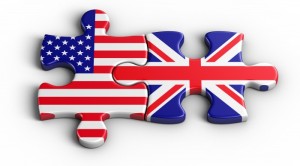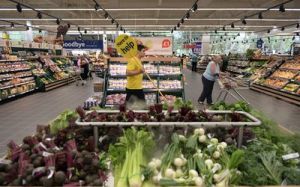We are often asked at The Value Engineers to tackle the big challenges facing global brands. The tension between adapting a brand to cater to the tastes and preferences of local consumers, whilst still maintaining a consistent global outlook is the pinnacle of excellent brand management and where we thrive. One of the questions often considered is this: how does a brand replicate the success it has in one country in another, completely different country?
I have a particular fascination with brands that try and bridge the gap between the UK and US. They say we Brits and the Americans are divided by a common language, and no more is this true than in the world of global brands. Despite speaking the same language and our cultural similarities, companies such as Tesco have shown us that British companies cracking the US is easier said than done. It is not an impossible challenge, however, with brands such as Pret a Manger and Topshop going from strength to strength. So what should a British brand be mindful of when looking to launch in the US? We’ve come up with six points to be mindful of when launching a British brand Stateside that should help steer your brand to success!
Be brutal. Being a British version of a brand that already exists may work in the short-term, but if that is your only real point of difference then you may suffer long-term. So what’s your true point of difference in the US market? A good starting point in understanding your brand’s point of difference is to look at the consumer insight it delivers against. Pret a Manger is a great example of a British brand that successfully identified that in the US they need to deliver on a different insight than in the UK. Broadly speaking, Pret’s UK consumer insight is grounded in the desire for a more premium, high quality lunch offering delivered fast. Yet in the US (and New York to be precise where Pret stores are primarily located) the insight is similar but nuanced, where the desire for a more healthy, premium high quality and fast lunch offer is satisfied.
Is your competitive point of difference in the UK really a point of difference in the US?
Be selective. A country that counts New York, the Rocky Mountains and the Deep South within its borders can almost be treated like many separate countries, all with their own competitor landscapes, diverse consumer bases, and local resources. Which part of the US is most likely to respond well to your brand? Which people? Can deliver your proposition in that part of the US with the resources available there? On reflection the Fresh and Easy proposition developed by Tesco would have perhaps worked better on the East Coast, not the West Coast. Their Fresh and Easy proposition centred on convenience and speed, with stores using self-checkouts to encourage smaller value more frequent trips. Yet on the West Coast, the sheer size of the geography means consumers drive more, shop less frequently and spend more each time. Hence the Fresh and Easy proposition did not quite cater to the existing behaviour of West Coast consumers. The East Coast, which is more densely populated, may have been at better fit for the Fresh and Easy model.
Are you targeting the right people in the right part of the US?
Be British (or not). A country’s nationality can influence its perceived competence in certain fields. German companies are renowned for efficiency and high performance. Italian companies are known for artistic and creative flair. Japanese companies are seen as technologically advanced. What are British companies known for overseas? And what effect will a British association have on your brand? It is important to decide whether Britishness, and its associated perceptions, will improve or hinder your brand. Topshop have successfully leveraged its British credentials, and in particular its London roots, as a key asset in the US. In fashion, London is seen globally as a dynamic and modern city, and Topshop proudly flies the flag for the UK fashion industry abroad. Their use of British models such as Kate Moss and Cara Delevingne have also helped to build high fashion credibility into the high street brand abroad.
Are your British credentials an asset or hindrance?
Be consistent. Perhaps the most crucial question of all is to do with logistics. Can you deliver the same product in the US without it becoming prohibitively expensive? The key difficulty some brands face, particularly in FMCG, is the challenge of delivering a consistent product across markets. Of course, one can develop entirely different propositions for each market, but this presents its own challenges. Business in a hyper-connected, globalised world can expose your consumers to how you present the same brand in different countries, which may prove problematic. In 2013 J Crew opened their first UK store on Regent Street in London, and was widely condemned for their pricing strategy, which was seen as much higher than its equivalent pricing in the US. Despite the obviously different cost bases in both locations, J Crew had to ride a consumer backlash over what UK consumers perceived to be a price hike in contrast to their US counterparts.
Can you deliver the same level of product and service in a cost-effective manner?
Use British produce (or just expertise). To avoid the logistical issues of transporting raw materials from Britain to America, you could use local resources instead. If overseen correctly, and utilising expertise from the UK, brand quality and authenticity could be preserved, enabling consistent delivery. There is however a trade-off. Particularly with FMCG products, consumers can sometimes tell the difference between the same product delivered in two different markets. Will your brand benefit from importing resources, or will importing expertise suffice? This is reminiscent of the Guinness effect, where consumers often perceives that Guinness tastes better in Ireland (which uses water sourced in Dublin) than in their home countries, where it is brewed using local water.
Should you import British resources or just British expertise?
Be timely. You may have the perfect brand and the perfect proposition. You may have wrestled with costs and logistics to deliver the ideal product to consumers. But if you are too early or too late then it may not be much use. Timing is everything, and despite the clear similarities, the UK and US can be at vastly different life stages depending on the markets you look at. Take coconut water for example- in 2003 Vita Coco created the category in the US. Over 10 years on and the category at large is at a significantly developed stage in the US, with the likes of PepsiCo and Coke battling it out for supremacy. Head to the UK however, coconut water has only really entered the mainstream consciousness in the past few years. A new entrant in either market would be mindful of this and therefore adopt very different strategies to succeed.
Is the US market in the right life stage for your brand?
If you’d like to find out more about our experience managing global brands, do get in contact by emailing tom.speed@thevalueengineers.com.

